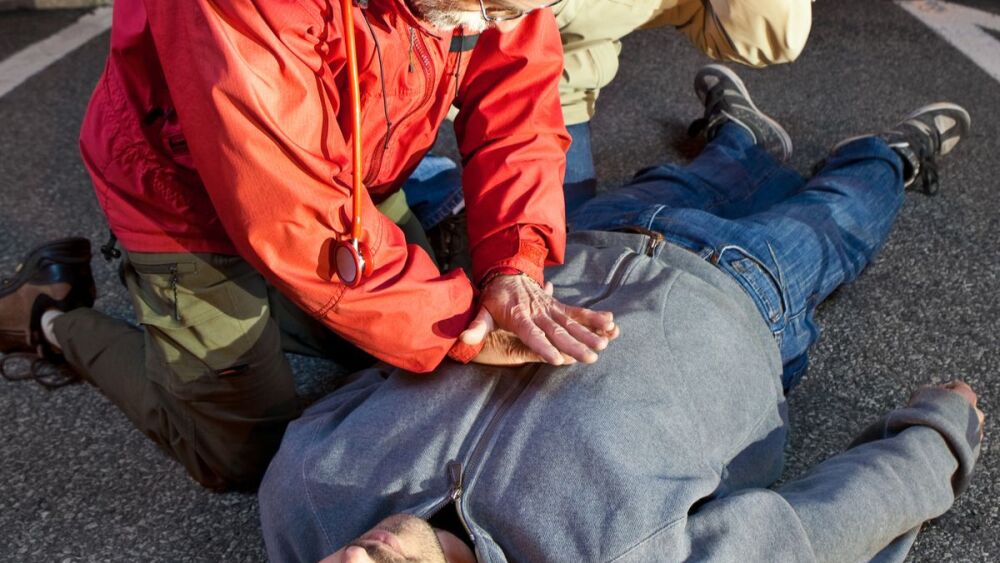We all became firefighters or EMTs/paramedics to help people in need. It’s great when we can be paid to do it and fulfilling to serve our communities as volunteers, but sometimes, the opportunity to help someone occurs when we are off duty. Whether it is a vehicle crash, someone who passes out in the grocery store or a child injured in a soccer game, if you are present, you naturally want to help.
Recently, someone who identified themselves an off-duty firefighter tried to help when she saw that George Floyd was unresponsive while in the custody of Minneapolis police officers. Floyd died during the encounter, sparking protests and riots across the country. We don’t know if that EMT would have been able to save Floyd, but it is worth taking a look at what we can do if we are ever put in a similar position.
1. PuBLic Safety duty to act
Are you required to offer help? Is it an ethical obligation or a legal duty? Laws can certainly vary from state to state and I am not a lawyer, but in most circumstances, if you are not on duty or on call, you are not legally required to act. An exception likely exists if you caused the circumstance, such as in a motor vehicle crash. Also, if you begin assessment and care of a patient, you probably have a duty to continue that care until relieved by other responders.
Legal considerations aside, you are probably more driven by your conscience, ethics and drive to help someone in need.
Read more: Bystander duty of care: Off-duty EMS liability
2. Scene safety
We’ve heard it from day one in EMT class and every training since then. Scene safety! BSI! You cannot help others if you get hurt or killed. That is certainly true, but we also know that we have to take the mantra with a grain of salt. Our business is risky, and we take the precautions that we can to mitigate those hazards.
When faced with an emergency while off duty, though, those concerns may be magnified. You are less likely to have PPE with you or a partner helping to scan for danger. You may not have the equipment needed to secure a scene or a way to get you and the patient out of harm’s way quickly. Take these factors into account as you make the decision to help.
Read more: Protecting EMS providers from violence
3. How to identify yourself as a first responder
An important part of your safety and the safety of others is your ability to identify yourself as an EMS provider when the time comes to help. In a charged situation, such as the incident in Minneapolis, law enforcement will be reluctant to allow you into the scene unless they know who you are and your credentials. One of their first duties in a crisis is to control the scene and limit who goes in or out. It is sad to think this happens but there have been plenty of cases where individuals have impersonated EMTs, firefighters and even law enforcement just to get into a scene or to check out what is going on. It is understandable that officials would not take you on your word and ask for proof.
While many of us proudly wear off-duty shirts and other apparel identifying our services, you should also consider having other identification available. Do you have an identification card from your employer or a state license that can be quickly shown?
Read more: Police warn terrorists may impersonate emergency responders
4. Back to basics: Patient assessment
After making sure that EMS resources have been dispatched to the scene, the next step is to identify and act on a few patient care priorities. Since you either witnessed the event or happened upon the situation without notice, you won’t have the luxury of dispatch information or time to think about what you are going to do when you get to the patient’s side. You must conduct a quick scene assessment to determine what happened as you approach the patient. From there, you will need to fall back on the true basic assessment and care skills you learned the first few days of class. You probably will not have any of the fancy tech gadgets you usually rely on to assess the patient. All you have are your eyes, ears, hands and brain.
Keep the core primary assessment in mind and focus on life-threatening conditions that you can detect and treat with basic maneuvers and without any equipment or supplies. These conditions may include:
- Airway obstructed by position
- Airway compromised by foreign body, vomit, secretions or blood
- Ineffective or absent breathing
- Open chest wound
- Severe hemorrhage
- Cardiac arrest
- Injured extremity with loss of pulse
Read more: How to safely provide off-duty assistance at crash scenes
5. Patient handoffs
In most cases, by the time you do a quick primary assessment and manage the life-threats, other responders that were dispatched to the call will be arriving on scene. Be prepared to identify yourself to them then provide a quick report of your assessment and the care you provided. Ask if they would like any additional help packaging the patient and moving them to the ambulance. If not, professionally excuse yourself and let them take over.
Read more: How to use a chronological approach for patient care narratives
Thanks for taking action to help someone in need. Whether you saved a life or just helped comfort them until the ambulance arrived, you did a good thing for the patient. It is caring people like you that make our profession look good.
Stay safe out there.
Read next: EMS Attorney David Givot, Esq., analyzes the legal considerations of the death of George Floyd: “Bystander duty of care: Off-duty EMS liability”













